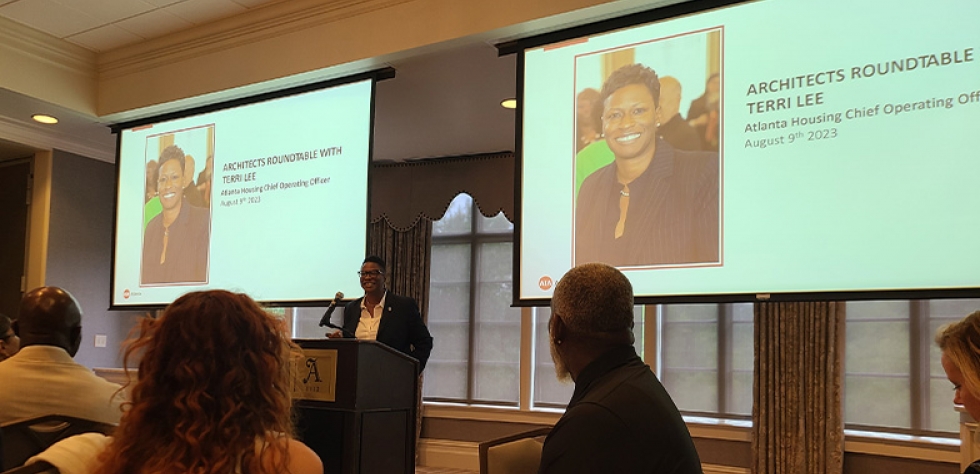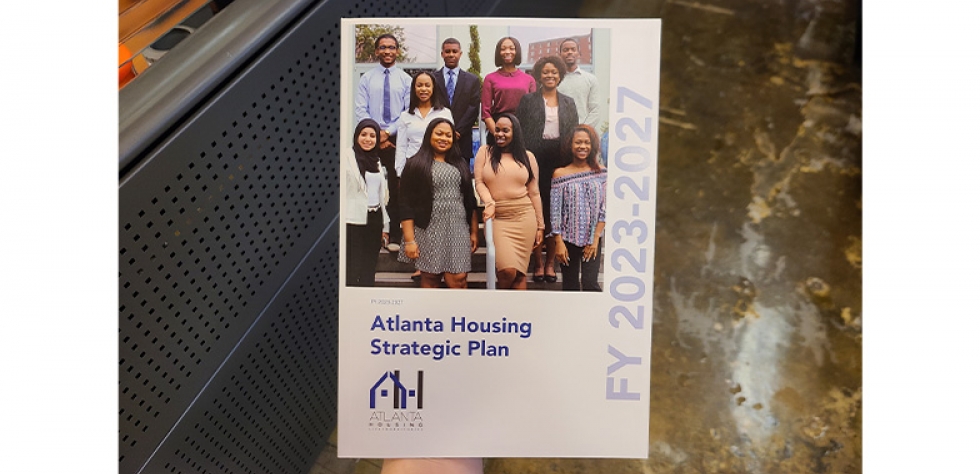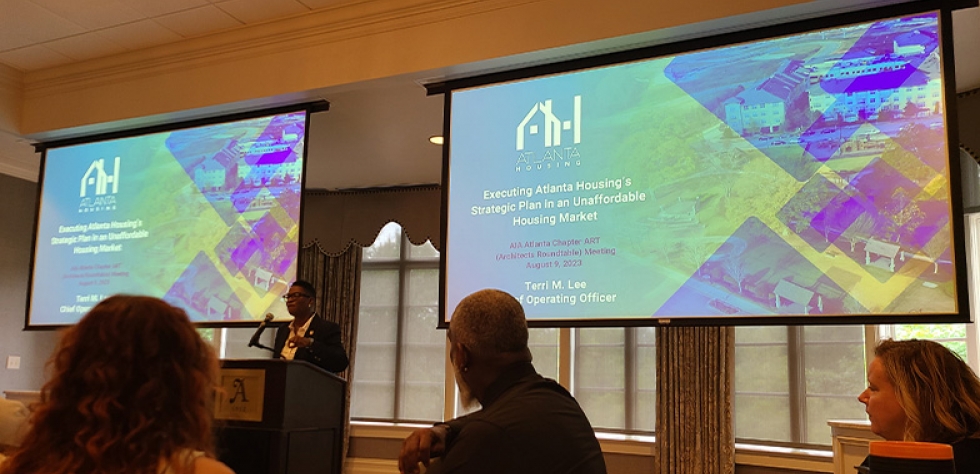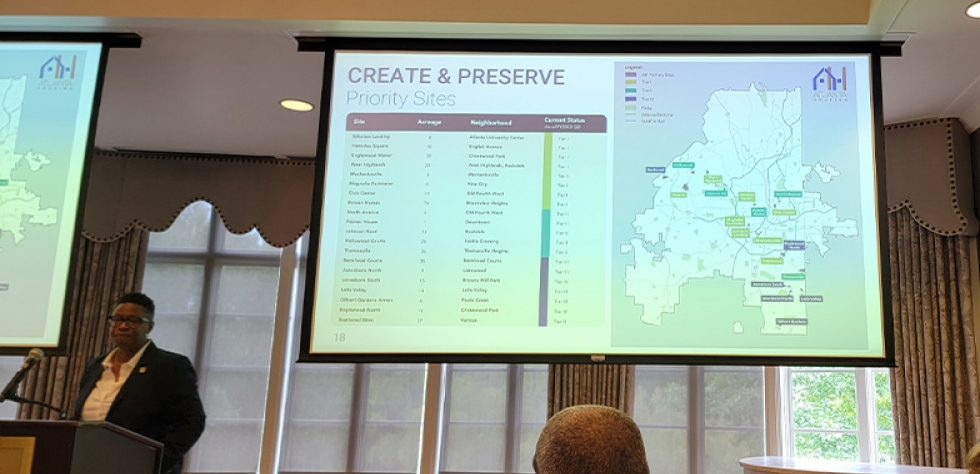Michael and Savanna attended an AIA Architects Roundtable with Terri Lee, Atlanta Housing’s Chief Operating Officer to learn about the city’s 5-year plan to combat the ongoing struggle of affordable housing. Read more below!

This 5-year plan was set forth to help achieve Mayor Andre Dicken’s vision of “safe, healthy, connected neighborhoods with an expansive culture of equity.” Atlanta Housing will play a major role in achieving his vision through a series of goals including creating and preserving 10,000 affordable housing units, enhancing resources for Atlantans in need, creating opportunities for individuals, families, and children to thrive, building and expanding partnerships to pool resources, communicating the impacts of AH’s work to Atlanta, and strengthening Atlanta Housing operations. Affordable housing is an issue not only in Atlanta, but around the world, and it will take the combined efforts of the government, developers, architects, and the community to create a seamless integration that will allow all members of our community to thrive.
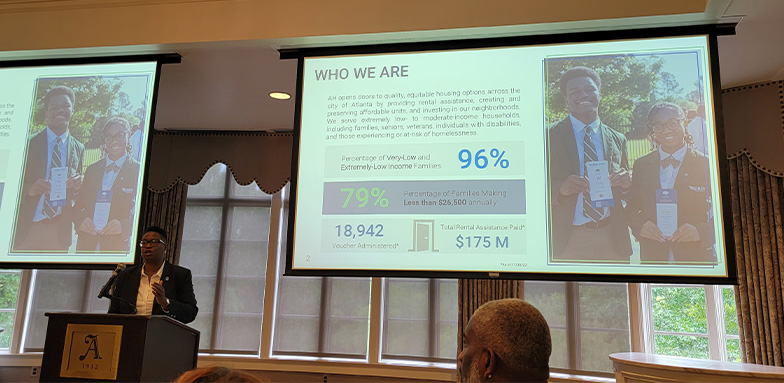
Foley Design works on a number of affordable housing projects, so this roundtable was a chance to dive deeper into the impacts these affordable housing communities have on life in both a micro and macro scale. Atlanta has grown rapidly which has contributed to significant increases in housing costs, but the wages have not kept up, leading to high burdens on those with the lowest incomes. In March 2022, Atlanta has been listed as an “unaffordable city” for the first time by the Federal Reserve Bank of Atlanta’s Home Ownership Affordability Index. According to statistics pulled by Atlanta Housing, between 2017 and 2021, the average rent in Atlanta increased by 23% per month, the median home sales price increased by 66%, and the average hourly wage only increased by 10% in that time. Because income hasn’t kept up with the cost of housing, there has been an increase in Atlanta cost burden, which is defined by households spending more than 30% of their income on housing. According to the 2020 American Community Survey, nearly half of all households in Atlanta making less than $50,000 per year were cost-burdened. Increasing affordable housing opportunities around Atlanta is an investment in the future of the city that will not only improve the lives of residents, but it will also push Atlanta to be a more connected and culturally equitable place to live.

Foley Design recently completed True Light Haven (https://www.nationalchurchresidences.org/communities/true-light-haven/), developed by National Church Residences; it is an affordable housing community that serves the 55+ population in Atlanta’s Westend neighborhood. This project consists of 124 units, including handicap accessible units, and a range of amenities including transportation, fitness room, on-site educational and social activities, and whole-building Wi-Fi. This project also has Atlanta Housing Authority Certification. Read more about this project here (https://www.investatlanta.com/impact-insights/true-light-haven-development-to-offer-124-new-affordable-housing-units-for-seniors). Another project that is in the works at Foley Design is The Simpson, developed by Quest Ventures and Integral Development. This Westside Atlanta affordable housing community is located in Vine City. It offers 139 unit apartments, a fitness center, cyber lounge, and an arts and crafts room, among other things. Read more about The Simpson here (https://atlanta.urbanize.city/post/affordable-housing-vine-city-project-near-new-parks). Understanding Atlanta Housing’s goals for their 5 year plan on the push for more affordable housing has given Foley Design better insight on how these projects are being accomplished and what is going on behind the scenes when we design and create these projects.
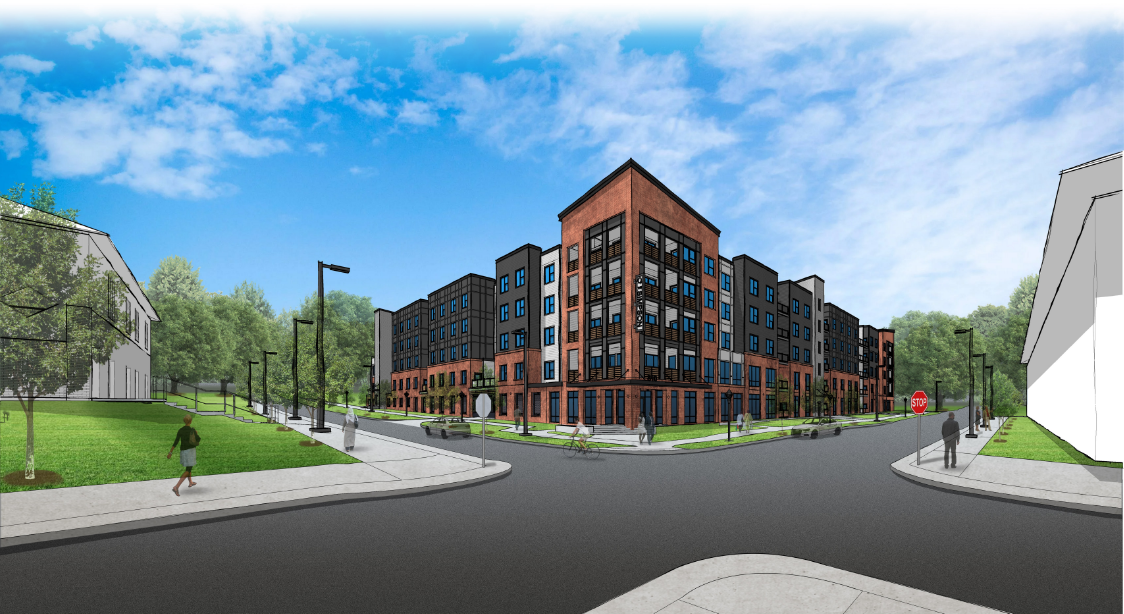
This AIA Roundtable was an opportunity for Michael and Savanna to not only learn about Atlanta Housing’s efforts and plans to increase affordable housing in the city, but it was also an opportunity to network with other architects and people in the industry that take interest in improving our city through affordable housing. Michael and Savanna met James Marlow, the new president of Southface, at the event, and they were able to discuss the sustainability side of the tax credit projects they work on. Southface is a nonprofit that promotes sustainability through education, research, advocacy, and technical assistance. Additionally, they were able to catch up with one of their former professors from Georgia Tech, Stuart Romm! In order to improve the city we live and work in, a collaborative effort between the city, architects, industry professionals, and the community will be key.
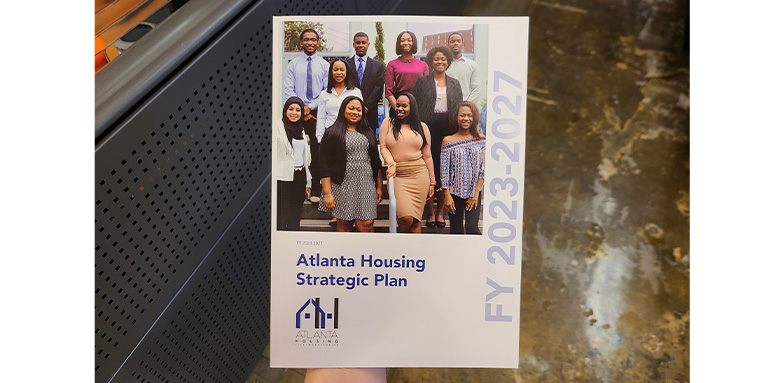
To see more of our projects, click here. (https://www.foleydesign.com/gallery)




